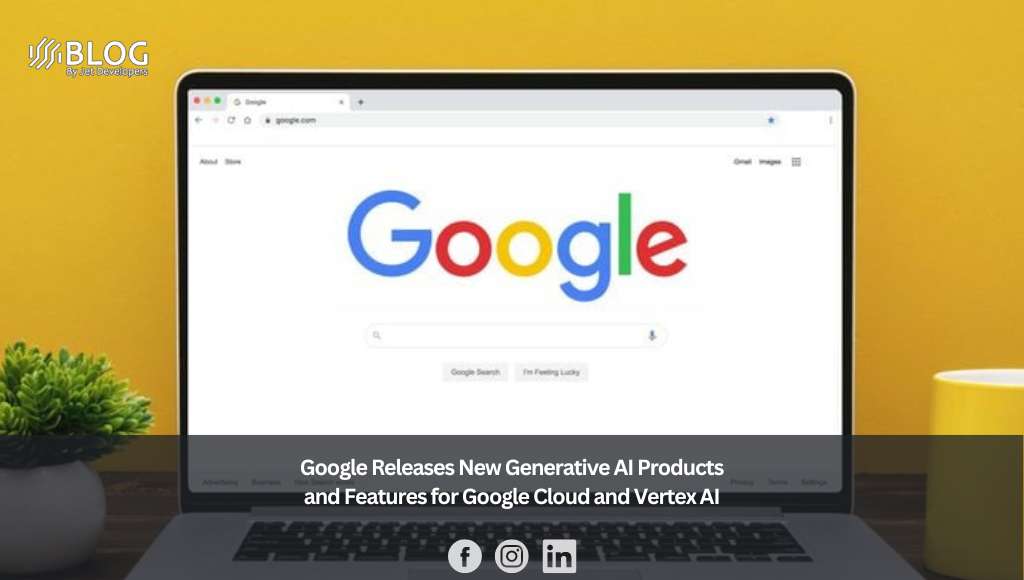During its annual developer conference, Google I/O 2023, Google made several exciting announcements, introducing a range of new products and features that provide customers with access to innovative generative AI capabilities and expanded options for utilizing and fine-tuning custom models.
One notable highlight is the introduction of three new foundation models available within Vertex AI, Google Cloud’s comprehensive machine learning platform. These models include Codey, a text-to-code model designed to assist developers with code completion, generation, and chat functionalities. Additionally, Imagen, a text-to-image model, empowers customers to generate and edit high-quality images to meet various business needs. Lastly, Chirp, a speech-to-text model, enables organizations to engage with customers and constituents more inclusively by supporting their native languages.
These new generative AI offerings from Google further expand the capabilities of Google Cloud and Vertex AI, providing customers with powerful tools to enhance their development processes, generate visual content, and facilitate effective communication with diverse audiences. The announcements at Google I/O 2023 reinforce Google’s commitment to driving innovation and advancing the field of artificial intelligence.
New tools for generative AI
Google’s new offerings — which in total include three brand-new foundation models, an Embeddings API, and a unique tuning feature — aim to empower developers and data scientists with more capabilities to build generative AI applications more quickly.
The first of the new foundation models released today, Codey, aims to accelerate software development by providing real-time code completion and code generation. Perhaps best of all, it can be customized to a user’s own codebase. The model supports more than 20 coding languages and is able to streamline a wide variety of coding tasks. It essentially helps developers ship products faster, generating code based on natural language prompts, and offers code chat for assistance with debugging and documentation.
Imagen, the second foundation model, helps organizations generate and edit high-quality images for a wide variety of use cases. This text-to-image model simplifies the creation and editing of images at scale, offering low latency and enterprise-grade data governance capabilities.
In one of the most exciting capabilities launched today, mask-free edit allows users to make changes to a generated image through natural language processing. This essentially means you can have a conversation with the user interface about how to generate the perfect photo, continuously iterating on the output. The model also offers image upscaling and captioning in over 300 languages. Users can quickly generate production-ready images, while built-in content moderation ensures safety.
The third foundation model, Chirp, focuses on enhancing customer engagement through speech-to-text. Trained on millions of hours of audio, Chirp supports more than 100 languages, with additional languages and dialects being added today. Chirp is a new version of Google’s 2 billion-parameter speech model that now boasts 98% accuracy in English and up to 300% relative improvement in languages with fewer than 10 million speakers.
Finding new relationships in data
To complement its new foundation models, Google introduced the Embeddings API for text and images, which is now available in Vertex AI as well. This API converts text and image data into multi-dimensional numerical vectors that map semantic relationships, which allows developers to create more engaging apps and user experiences. Applications range from powerful semantic search and text classification functionality to Q&A chatbots based on an organization’s data.
Another standout feature of Vertex AI’s update is reinforcement learning from human feedback (RLHF), which Google claims makes Vertex AI the first end-to-end machine learning platform among hyperscalers to offer RLHF as a managed service. This feature enables organizations to incorporate human feedback to train a reward model for fine-tuning foundation models, making it particularly useful in industries where accuracy and customer satisfaction are crucial.
Google’s new generative AI advancements are poised to revolutionize the development landscape, offering developers and data scientists an increasingly sophisticated toolset for leveraging AI in the cloud. With these new foundation models and tools, the possibilities for innovation and responsible AI development are virtually limitless.






